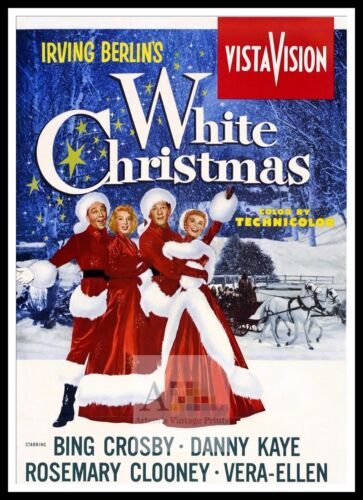
To listen to this reflection as a podcast, click here.
Throughout the season of Advent – which this year encompasses the four weeks leading up to December 25 – we’re looking at classic Christmas movies and how they might connect us to the miracle of God choosing to become a human being.
Four centuries ago, a Swiss medical student noticed that soldiers fighting far away from home often experienced deep feelings of melancholy.
Since he couldn’t find a word that appropriately described their experience, he coined one of his own: nostalgia.
It was a combination of two Greek words: nostos (“homecoming”) and algos (“pain” or “ache”). Nostalgia is an almost physical ache to go home, or to go back to a happier past, or perhaps to go forward to reclaim something priceless that has somehow been lost.
White Christmas, hands down, is the most nostalgic movie on our list this month. The audience feels deep nostalgia just by watching a story about characters who are themselves feeling deep nostalgia.
The plot plays second fiddle to the musical score – one Irving Berlin hit after another. It’s 1954, and Bing Crosby and Danny Kaye are old World War II Army buddies making a living as a song-and-dance team. Crosby does most of the singing and Kaye does most of the dancing. They fall in love with the Haynes Sisters – Rosemary Clooney and Vera-Ellen – the former who does most of the singing and the latter who does most of the dancing. In fact, when the girls sing their famous duet “Sisters,” you’re hearing Clooney’s rich voice carrying both parts.
The four eventually find themselves in a snow-less Vermont, trying to attract customers to an inn that is owned by their beloved retired commanding general. Crosby and Kaye secretly invite the members of their old unit, now scattered around the country, to travel to New England on Christmas Eve to pack the house.
What binds the movie together is Berlin’s most famous song. “White Christmas” originally appeared in the 1942 movie Holiday Inn and was reprised in 1946’s Blue Skies. It is almost certainly the bestselling song of all time – a mark it holds only unofficially, since musical “charts” didn’t begin documenting the sales of top singles until the 1950s.
Crosby sang the song in public for the first time shortly before Christmas 1941, only weeks after Pearl Harbor. Throughout the war, wherever he traveled to entertain American troops, “White Christmas” was the soldiers’ number one request.
They were stabbed by nostalgia – a deep longing to return, safe and alive, to homes that would be more secure because of their sacrifices on the front lines.
In the opening scenes of the movie, Crosby sings “White Christmas” amidst falling shells in a war-shattered landscape. As the movie closes, with snow at last whitening the Vermont landscape, the general, the troops who love him, and the two romantic song-and-dance couples join to sing it again. It doesn’t get much more nostalgic than that.
Here’s a collection of favorite scenes. Jump to the end to enjoy the big finale: “White Christmas” – Top 5 Scenes of White Christmas – General – Snow – The Ending – Bing Crosby – YouTube
Christmas was a complicated day for Irving Berlin.
He, a Russian-born Jew, had married Ellin Mackay, the daughter of a wealthy Catholic businessman. Clarence Mackay did not approve. He withheld his blessing and refused to speak to them for three years. That all changed when the Berlins’ infant son Irving Berlin Jr. – not even a month old, and the only son they would ever have during their 62 years of marriage – died on December 25, 1928. Awash with shared grief, Mackay re-entered their lives.
For Berlin, “White Christmas” evoked a yearning to somehow redeem and reclaim what was for him the most painful day of the year.
We yearn for a world in which everything broken can finally be healed or repaired. Does that mean we should be praying, “Beam me up, Jesus”? Is the hope of heaven just a means of escape from the disappointment of the present world?
The apostle Paul has a different take:
“All around us we observe a pregnant creation. The difficult times of pain throughout the world are simply birth pangs. But it’s not only around us; it’s within us. The Spirit of God is arousing us within. We’re also feeling the birth pangs. These sterile and barren bodies of ours are yearning for full deliverance” (Romans 8:22-23, The Message).
Our nostalgia for childhood, for the joys of past Christmases, for former days of health and hope, is, at root, a nostalgia for our true spiritual home – the new creation that God is even now preparing.
It’s a new world that, by God’s grace, we ourselves can help bring about.
And tomorrow will bring us one day closer to its reality.
